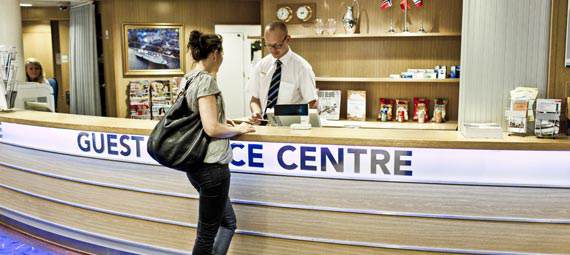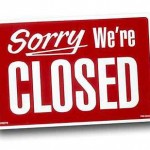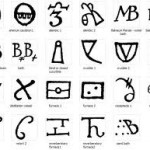Posts Tagged ‘Service Sector’

Longleat Adventure and Safari Park, owned by Owned by Longleat Enterprises Limited has been operating from April 1966 and comprises more than “15 fabulous attractions, including the new multi pound Jungle Kingdom and Longleat House, one of the most stunning stately homes in Britain” (About Longleat, 2013, online). The following table illustrates Longleat Safari Park SWOT analysis: Strengths Lack of competition in the UK High quality of customer services Affordable prices for Longleat Hotels Weaknesses Not possible to reach the park by public transport “Mercedes Destroyed by Monkeys at Longleat Safari Park” and some other similar videos on YouTube demotivating people to attend to park Opportunities Increasing ranges of services Possibilities of attracting sponsors Increasing ranges of animals Threats Negative impacts of various environmental groups Visitors being attacked by animals Environmental changes posing risks for animals in Longleat Safari Park

Thorpe Park is one of the most popular theme parks in the UK and it belongs to Merlin Entertainments Group, the world’s second biggest visitor attraction operator with more than 30 million visitors annually and about 13,000 employees (Merlin Entertainment Group, 2013, online). Merlin Entertainments Group management have specified its mission statement as ‘The delivery of memorable experiences to our millions of guests underpinned by the very highest Health & Safety standards’. Besides Thorpe Park, Merlin Entertainments Group portfolio includes a range of famous entertainment brands such as Legoland, Chessington World of Adventures, Madame Tussauds, Heide Park, The London Eye, Warwick Castle, Sea Life, Alton Towers, Gardaland, and London Dungeons (Merlin Entertainment Group, 2013, online). SWOT analysis can be used in order to represent relevant secondary data in an appropriate format to assist in decision-making. SWOT analysis can be explained as a “review that helps planners compare internal organisational strengths and weaknesses with external opportunities and threats” (Boone and Kurtz, 2013, p.46). The following table illustrates Thorpe Park SWOT analysis Strengths Greater ranges of ages of target customers (not only children) A wide range of rides Effective website design World-famous rides such as SAW, STELTH, and COLOSSUS Weaknesses High level of seasonality Geographical location not far from Chessington World of Adventures and Windsor’s Legoland Expensive prices Opportunities Introduction of new, innovative rides Increasing ranges of services Formation of strategic collaborations with other companies in catering and entertainment industry Threats Injuries to customers due to technical or other faults Further increasing influence of indirect competition – video games Negative impacts of relevant government legislations References Boone, L.E. & Kurtz, D.L. (2013) “Contemporary Marketing” Cengage Learning Merlin Entertainments Group (2013) Available at: http://www.thorpepark.com/misc/merlin-entertainments.aspx

Gap Model of Service Quality consists of the following gaps: Gap 1: customer expectation – management perception gap: the difference between the service the customer expects and the service level the supplier thinks that customer wants. Gap 2: management perception-service standard gap: the difference between the service specification that is set and the supplier management assessment of customer service requirements. Gap 3: service standard-service delivery gap: the difference between the actual service that is provided and the planned level of service based on the service specification that has been set. Gap 4: service delivery-external communication gap: the difference between the actual service that is provided and the promised level of service that was communicated to the customer. Gap 5: actual service – perceived service gap: the difference between the service that the supplier is providing and the service that the customer thinks is being received.

Cycles of Failure and Cycles of Success and their Implications on Service Profit Chain. This article outlines the key drivers of success for service organisations exploring issues in the works of Schlesinger and Heskett (1991) “Breaking the Cycle of Failure in Services”. The implications of these issues on the Service Profit Chain are analysed in the report using the case of The Savoy hotel and a range of other service organisations. Key Success Drivers for Service Organisations A service organisation can be defined as “two or more people are engaged in a systematic effort to provide services to a customer, the objective being to serve a customer” (Wright and Race, 2004, p.4). Characteristics used to distinguish between manufacturing and service operations include tangible and intangible nature of output, consumption of output, nature of work, degree of customer contact, customer participation in conversion, and measurement of performance (Mishra, 2009). It has to be stressed that “the ability to manage skills and resources more effectively and efficiently was always the critical driver of success for any service organisation” (Magilo et al., 2010, p.438). Moreover, due to the specific characteristics of service organisations as described above, the role of human resources and personal interaction with customers is greater in service organisations compared to manufacturing businesses. Accordingly, the levels of employee skills and capabilities can be justly specified as crucial success factor for service organisations. Service organisations like Savoy hotel have traditionally relied on consistent quality as a key success driver, whereas for other organisations such as investment banks such JP Morgan effectively micromanaging the corporate culture has proved to be a significant driver for success. Generally, additional success drivers relevant to most types of service organisations include effective leadership, establishing strategic relationships with customers, creativity and others (Forgas et al., 2008). Cycles…

Rai (2008) states that when companies are analysing customer expectations in service sector, the following issues need to be studied and addressed by company management: Firstly, analysing what customers expect from the services. Following this specific advice can prove extremely helpful due to the fact that sometimes service companies commit to considerable investments aiming to improve customer satisfaction spending money on some aspect of the service that customers do not value, at the same time failing to recognise the issues that are causing customer dissatisfaction. Secondly, analysing factors influencing on the formation of customer expectations. Once these factors are learned it will be much easier for service companies to undertake strategies aimed at improving customer satisfaction. Thirdly, analysing the ways of changing customer expectations. Learning how to manipulate with customer expectations will give service companies tremendous advantages in forming customer expectations in a way that is easier for the company to exceed these expectations. Fourthly, service companies should devise efficient strategies that are aimed at exceeding customer expectations. Once all the above specified measures are implemented exceeding customer expectations would not prove to be extremely challenging. Rai (2008) discusses following five dimensions that form basic ‘skeleton’ of corporate relationship management of a service company: First, tangibles associated with a service. Although the main difference of services from products is that services are intangible, still ‘tangibles’ associated with services such as decoration, design of the premises, the quality of seating, cleanness of place etc. do play an important role on customer satisfaction. Second, offers associated with services. This relates to the level of attractiveness of service offers made from the financial points of view. Third, the delivery of the service. Regardless of type of the service the level of its delivery is going to affect customer satisfaction. Therefore, some service companies…

The definition of food tourism is straightforward and there is no dramatic contrast among various definitions offered by various authors. A typical definition of food tourism would is like a “visitiation to primary and secondary food producers, food festivals, restaurants and specific locations for which food tasting and/or experiencing the attributes of specialist food production regions are the primary motivating factors for travel” (Buhalis and Costa, 2006, p.137). To make it more simple, it can be stated that food tourism is travelling to other destinations in order to consume their food. First of all, there is a consensus among the vast majority of authors the works of whom have been studied as a part of literature review that the topic of food tourism is not new. At the same time, “yet it is such an integral part of the experience that it is only in recent years that it has become a subject of study on its own right” (Hall and Sharples, 2003, p.1). Gretzel et al (2010) link this recent rise of popularity of food tourism to technological advancement in general, and the increasing role of internet in particular, by stating that once it became easier for people to get information of various types from internet including culinary and cuisine of other nations, more and more people started to travel to other countries for the sake of trying their food. Moreover, some authors have offered explanations about the growth of food tourism by stating the importance of the tourism destination. Specifically, it has been stated that “as the motivation to experience food and while travelling growth, destinations with appropriate levels of food and wine resources are able to develop increasingly sophisticated food and wine experiences, which may lead to the emergence of gourmet tourism” (Chen, 2009, p.165) Among a…

Symbol has been defined by Smith (2009) as a material object, written sign or something invisible that is used to represent something else. “The idea of ‘binding a matter with the matter’s image” is one that speaks to a more visceral aspect of symbolism and suggests a dimension of relational meaning for symbols that can play no comparable role in our understanding of a simple phonetic latter in the modern sense” (Scranton, 2010, p.47). According to Brodskaya (2007) in literature symbolism can be in forms of damnation, salvation, and reincarnation. Currently symbols are used for commercials purposes as well by many companies through associating their brands with a particular symbol or logo. Consumption can be interpreted as buying, using and interpretation of things (Aldridge, 2003) and in this sense it is a different term from a traditional economic definition of consumption. “Consumption involves consuming ideas, images on television and in advertisements” (Bocock, 1993, p.33). There are debates about the role and scope of the notion of consumption, but generally, many researchers agree on the current meaning of consumption in a way that modern identities are structured around the experience of consumption (Dunn, 1998). An interesting point relating to the issue of consumption is that it is very difficult for people to distinguish their ‘true’ and ‘false’ needs. True needs are air, water, food, sleep, and sex, without which it is impossible to live and people have to ‘consume’ them regularly, whereas ‘false’ needs are the ones created by marketing professionals, which makes people want to ‘consume’ their products or services. For instance, thirst for Coca Cola is a ‘false’ consumption need created by marketers. This is possible because people tend to express their desire through their consumption patterns. For example, if an individual desires to become a senior level executive,…

Introduction Tourism has been one of the biggest and the most profitable industries in 20th century and this industry is moving towards the new level in 21st century with new variations and services included. Ecotourism is one of the variations of tourism that has been attracted mixed opinions from business academics and practitioners alike. Ecotourism can be defined as “travel to enjoy the world’s amazing diversity of natural life and human culture without causing damage to either” (Tickell, 1994, p.ix) On one hand, there are authors who argue that ecotourism is beneficial to tourists and local society in many levels pointing to learning opportunity for tourists and economic benefits to ecotourism destinations along with a range of other perceived benefits. On the other hand, there are others who point to the occasions were people were misplaced, local nature damaged, as well as socio-economic inequalities as the negative effects of ecotourism. Wearing and Neal (2009, p.6) mention two main facets of inequality as travelling to unspoilt natural environments and experiencing natural environment as the purpose of the travel. Emerging around 1980’s, ecotourism is believed to be related to nature-based, environmental education and sustainable development. However, there are some people who are highly sceptical about the benefits of ecotourism, and claim that it produces socio-economic inequalities. The Benefits of Ecotourism Development Ecotourism offers range positive impacts for tourists, host destinations, and the science and environment in general. The impact of ecotourism on the designated areas where ecotourism has been promoted is not only a marginal activity to finance the protection of the environment, but is also a major industry of the national economy. Tuohino and Hynonen (1991) mention the fact that due to rapid growth of the ecotourism in areas like Costa Rica, Ecuador, Nepal, the local communities are also benefiting…
